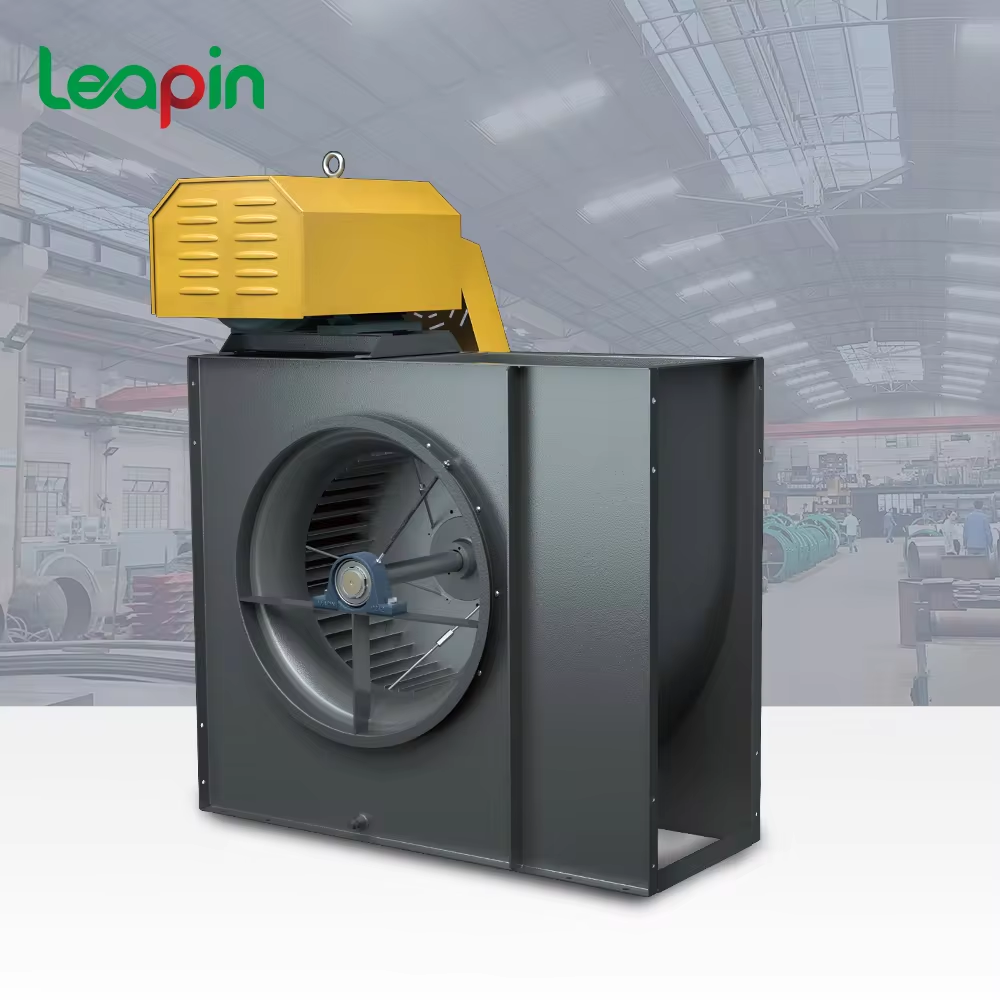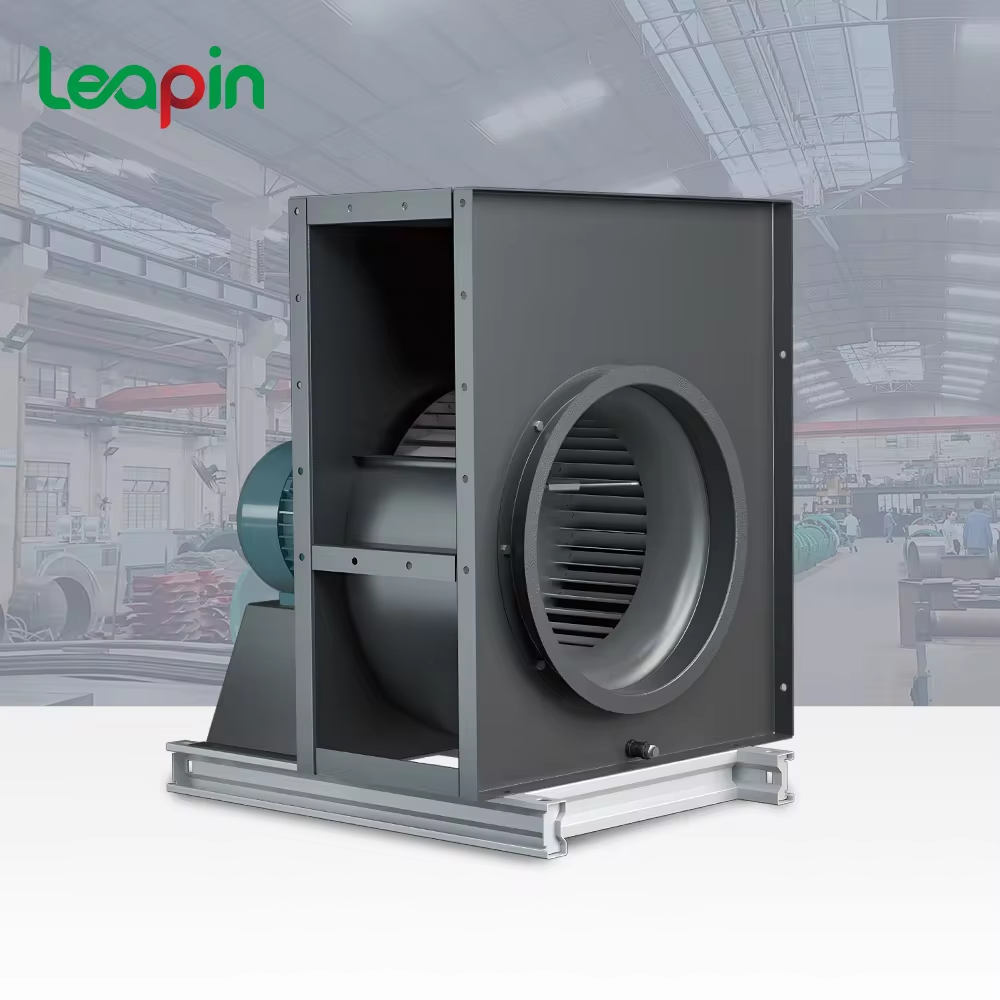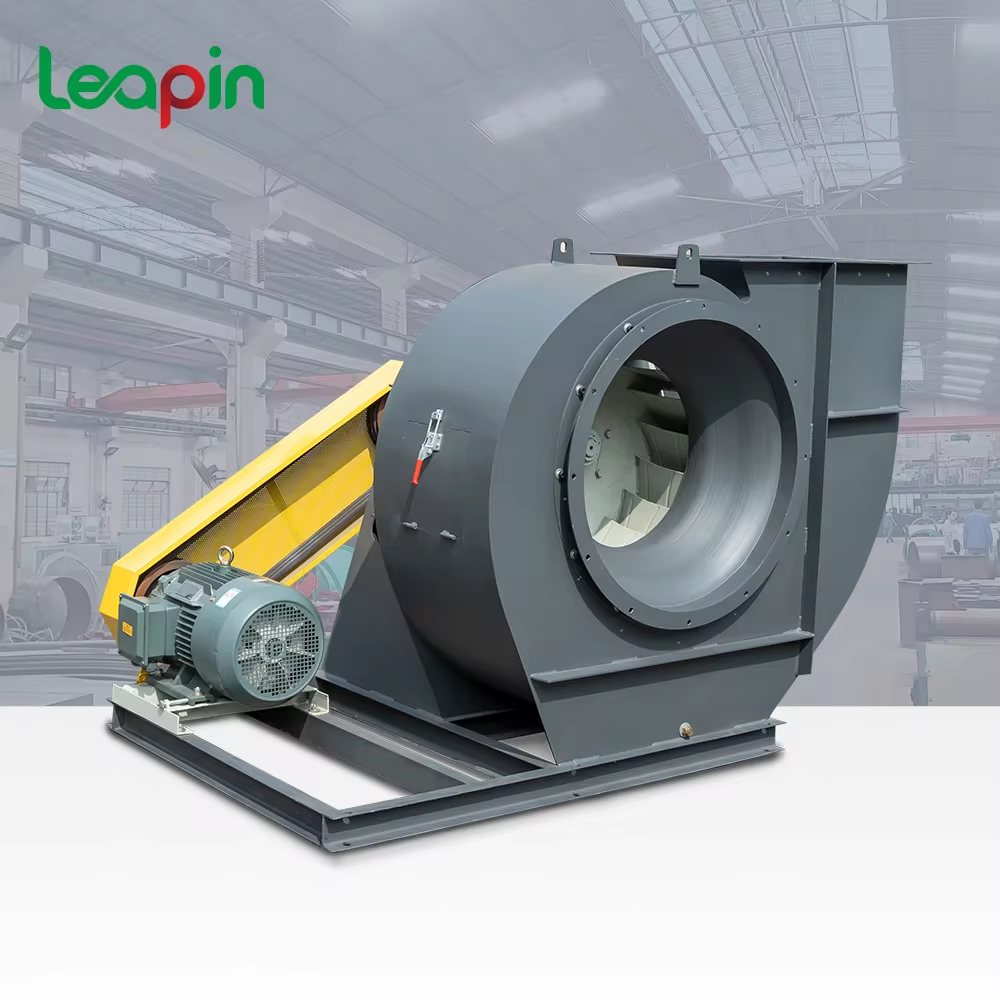Exploring the Efficiency of Centrifugal Fans in Industrial Settings
Key Efficiency Factors in Industrial Centrifugal Fans
Airflow Dynamics and Pressure Generation
Airflow dynamics are critical in determining the efficiency and effectiveness of centrifugal fans in industrial settings. These dynamics are influenced by the design and operating conditions, which dictate how well the fan can generate optimal pressure. For instance, the casing and impeller geometry profoundly impact airflow efficiency and pressure generation, as does the configuration of inlet and outlet. Studies from HVAC engineering journals have shown that spiral casing designs enhance airflow and pressure handling capabilities, improving performance in demanding industrial applications. Moreover, understanding and utilizing fan curves, which illustrate the relationship between airflow volume, pressure, and power consumption, is crucial. Industry standards provide benchmarks and metrics that help align fan performance with specific system requirements, ensuring that centrifugal fans operate at peak efficiency.
Energy-Efficient Motor Configurations
In industrial centrifugal fans, energy efficiency is significantly affected by the type of motor configuration employed. Common configurations include AC and DC motors, with high-efficiency motors offering better energy consumption profiles. Additionally, variable frequency drives (VFDs) are instrumental in enhancing energy efficiency by adjusting motor speed to meet varying load demands, minimizing energy wastage. Case studies demonstrate notable reductions in operational costs within manufacturing settings due to these energy-efficient solutions. For example, the integration of VFDs in ventilation systems has shown decreased energy consumption without compromising performance, marking a shift towards sustainable industrial processes.
Noise Reduction Techniques for Sustained Performance
Reducing noise levels in industrial centrifugal fans is not only essential for maintaining performance but also has significant implications for worker safety and health. Effective noise reduction techniques include sound insulation and vibration dampening materials, which help improve operational efficiency. Using these materials has been validated by statistical data displaying a decrease in decibel levels across different fan models. This reduction is crucial in minimizing the risk of hearing damage and stress among workers in manufacturing environments. Implementing these techniques ensures that fans perform consistently while adhering to health and safety standards, contributing to a more conducive industrial workspace.
Impact of Aerodynamic Design on Fan Performance
Spiral Casing Optimization for Minimal Turbulence
The design of spiral casings in fans plays a crucial role in reducing turbulence and enhancing airflow efficiency. By channeling the airflow in a smooth, continuous path, spiral casings minimize energy losses and improve overall fan performance. Aerodynamic studies consistently show that properly designed spiral casings outperform traditional ones by effectively managing airflow dynamics. For example, a study found that fans with spiral casings exhibit significantly less turbulence, resulting in improved static pressure and energy savings. In commercial applications, selecting the optimal shape and size for spiral casings is vital. Recommendations include evaluating the specific airflow requirements and environment to tailor casing design accordingly, ensuring minimal resistance and maximum efficiency.
Backward vs. Forward-Curved Blade Efficiency
The choice between backward and forward-curved blades significantly impacts the efficiency of centrifugal fans concerning airflow and static pressure generation. Backward-curved blades are known for offering higher efficiency and quieter operation, making them ideal for applications requiring stable airflow and reduced energy consumption. In contrast, forward-curved blades excel in scenarios demanding high-volume air movement at low pressures, such as HVAC systems. Industry feedback suggests that backward-curved blades are preferred in industrial settings for their superior energy efficiency. Performance metrics indicate a noticeable difference in the efficiency profiles, with backward-curved blades consistently delivering more robust performance in real-world applications.
Material Selection for Durability and Airflow Precision
Choosing the right materials is essential to ensure the durability and performance of centrifugal fans, especially under varying operating conditions. Different materials offer distinct benefits, influencing airflow precision and the longevity of the fan. Lightweight composites, for instance, offer advantages in reducing energy requirements and increasing operational efficiency compared to traditional metals. However, metals provide superior durability, especially in harsh environments. Best practices in material selection should prioritize resistance to corrosion and wear, particularly in demanding industrial applications. Ensuring the materials align with specific environmental conditions can significantly extend the lifespan and maintain the precision of airflow in centrifugal fans.
Industrial Applications Demanding High-Efficiency Solutions
HVAC Systems in Large-Scale Facilities
Centrifugal fans play a pivotal role in HVAC systems for large-scale facilities, ensuring efficiency and reliability. These fans are designed to handle high airflow rates and maintain consistent pressure, making them ideal for large commercial buildings. They contribute significantly to energy savings, as demonstrated by various case studies. One notable example is the use of advanced fan technologies in commercial buildings, which has led to measurable reductions in energy consumption and operating costs. Integration strategies are vital for optimizing fan systems within existing HVAC designs. By carefully assessing the existing infrastructure and identifying potential improvements, facilities can enhance their overall performance and sustainability.
Fume Extraction in Manufacturing Processes
Effective fume extraction in high-risk manufacturing environments relies heavily on centrifugal fans. These fans are essential for meeting stringent regulations and standards that mandate efficient fume extraction, such as the Occupational Safety and Health Administration (OSHA) guidelines. Centrifugal fans are engineered to capture and remove harmful fumes, ensuring compliance and safety within manufacturing processes. Successful implementations, like the deployment of sophisticated ventilation systems in chemical plants, highlight their effectiveness. These systems not only reduce fumes to comply with regulations but also protect the health of workers exposed to hazardous environments.
Dust Management in Heavy Machinery Environments
Dust poses significant challenges in heavy machinery environments, making centrifugal fans crucial for maintaining air quality. By utilizing centrifugal fans, industries can implement innovative dust management solutions that enhance reliability and prolong machinery life. These systems tackle the issues posed by dust accumulation, which can lead to inefficient operations and equipment wear. Supporting data show improved operational efficiency in industries that have successfully integrated centrifugal fan systems to manage dust. For example, mining and construction sectors have reported increased machinery uptime and reduced maintenance costs, proving the efficacy of these fans in demanding settings.
Product Showcase: LEAPIN's Centrifugal Fan Series
LT-BC(s) Series: High-Pressure Backward Inclined Design
The LT-BC(s) Series is well-regarded for its high-pressure capabilities and backward inclined design, providing a robust solution for demanding air movement needs. The unique features of the LT-BC(s) series include a low noise backward tilting impeller and high structural strength, making it ideal for high static pressure systems. Perfectly suited for ventilation in industrial plants, this series stands out in applications requiring efficient smoke and ventilation management. User testimonials often highlight its reliable performance in high-rise buildings and workshops, citing improved air quality and reduced energy costs.
LT-FC(s) Series: Forward-Curved Multi-Blade Efficiency
The LT-FC(s) Series showcases an innovative forward-curved multi-blade design, significantly enhancing airflow efficiency while maintaining low noise levels. Known for its ability to handle large volumes of air with minimal power consumption, the LT-FC(s) series is optimal for settings with high flow requirements such as theaters, malls, and hospitals. Independent testing underlines the series' energy-saving attributes, with users praising its smooth operation and significant drops in noise pollution.
FCS-E Series: Belt-Driven Customizable Performance
The FCS-E Series stands out with its belt-driven, customizable performance, making it suitable for a broad spectrum of industries from manufacturing to agriculture. This series accommodates various airflow needs through adjustable fan speeds, ensuring optimal performance across different conditions. Known for its flexibility, the FCS-E series is often highlighted in usage statistics for its adaptability and consistent performance in dynamic environments.
FCS-A Series: Direct-Drive Compact Solutions
The FCS-A Series is renowned for its compact, direct-drive design, providing solutions for environments where space is limited. Featuring a streamlined setup that reduces maintenance requirements and boosts reliability, it excels in performance while minimizing the operational footprint. In comparison to belt-driven systems, direct-drive fans in the FCS-A series deliver consistent efficiency without the need for additional components, offering lower long-term operational costs.
LP73 Series: Industry-Leading Energy-Efficient Models
The LP73 Series leads the market with its high energy efficiency, providing top-tier performance with minimal energy consumption. Notable for its advanced design that optimizes airflow while reducing energy use, this series has garnered significant acclaim. Case studies from clients frequently highlight substantial savings in operational costs, illustrating an impressive return on investment achieved through the LP73 series' superior energy-efficient capabilities.
Market Trends Shaping Centrifugal Fan Technology
Growing Demand for Low-Noise Industrial Ventilation
The demand for low-noise ventilation solutions in the industrial sector is on the rise, driven primarily by stringent noise regulations in environments that require quiet operations. Manufacturing plants and industrial facilities are increasingly adopting fans that minimize sound emissions without sacrificing performance. According to recent market data, there is a noticeable shift towards quieter ventilation systems, highlighting a growing preference among manufacturers for noise-reducing technologies. This trend compels fan designers and innovators to develop advanced systems that cater to noise-sensitive applications. As the industrial landscape evolves, the emphasis on low-noise technologies becomes crucial in maintaining compliance and enhancing worker comfort and productivity.
Adoption of Smart Control Systems for Optimization
The integration of smart control systems in centrifugal fans is revolutionizing energy use and performance optimization. These systems enable precise control through automated adjustments based on environmental factors, ultimately improving efficiency. The trend of incorporating smart technology in fans aligns with predictive maintenance, allowing users to foresee and address potential issues before they escalate. Numerous studies have demonstrated the significant efficiency improvements achieved by adopting smart systems. As industries seek innovative solutions, the role of smart control in enhancing fan performance stands prominent, paving the way for more intelligent and responsive industrial operations.
Projected 6.3% CAGR in Ventilation Solutions (2025-2030)
Market research projects a 6.3% compound annual growth rate (CAGR) in ventilation solution technologies from 2025 to 2030. This growth trajectory is primarily driven by advancements in fan technology and an increasing demand for energy-efficient solutions. Key factors include the proliferation of smart technologies, improved designs that enhance air movement and pressure capabilities, and stricter environmental regulations necessitating efficient ventilation systems. Major market players, through continuous innovation, contribute significantly to this growth, offering cutting-edge products that meet evolving industry needs. The anticipated growth underscores the critical role of innovative and energy-efficient ventilation solutions in the global market.

 EN
EN
 AR
AR
 FR
FR
 RU
RU
 ES
ES
 TL
TL
 ID
ID
 VI
VI
 TH
TH
 MS
MS
 BN
BN






